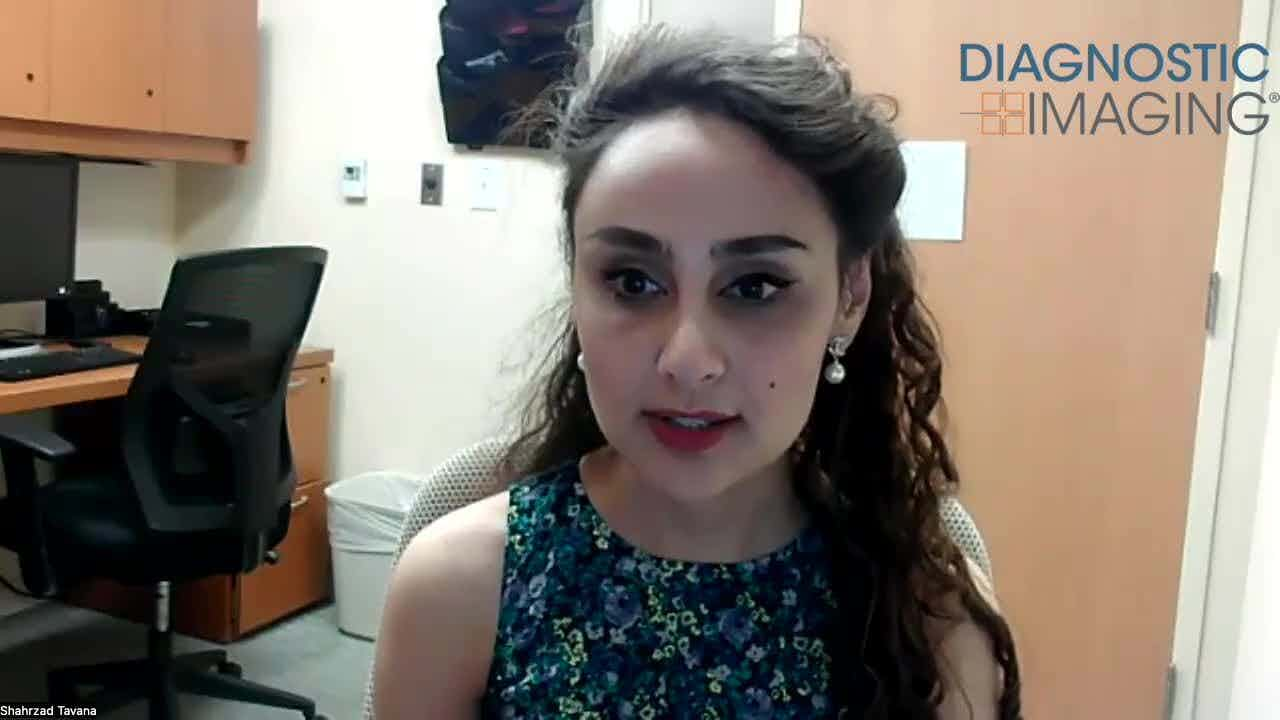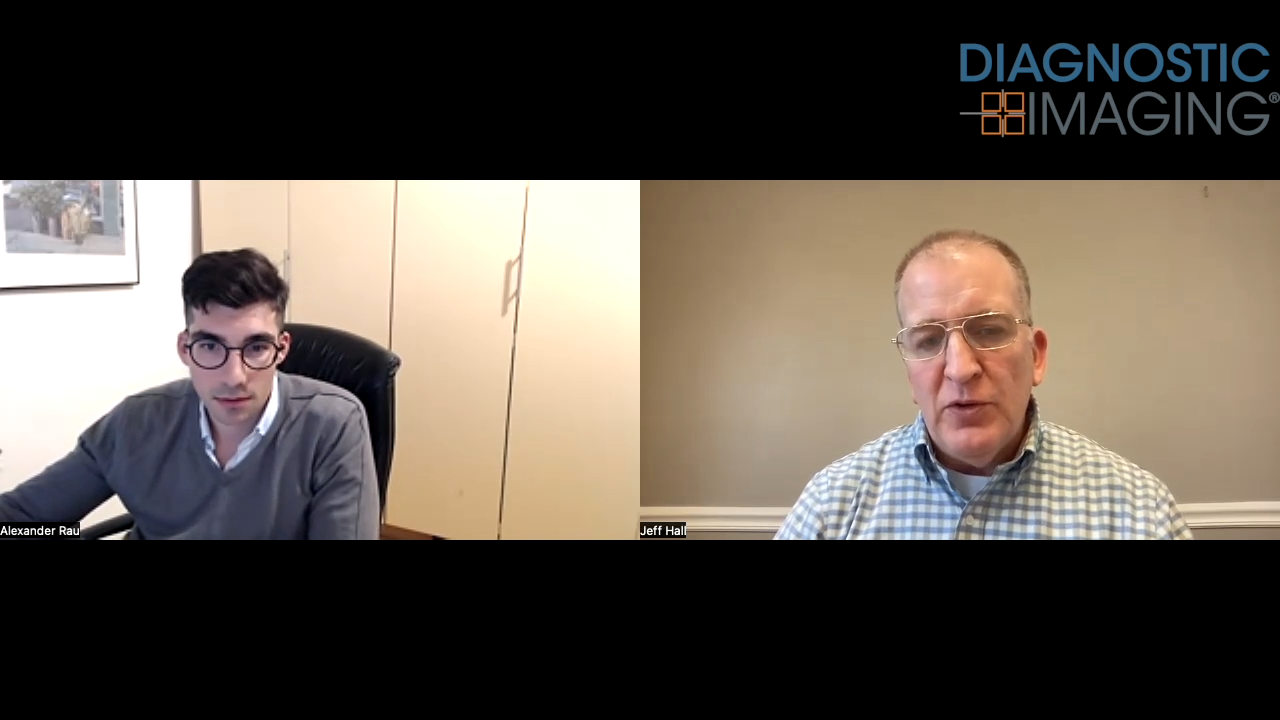Trained specialists can explore US potential
Liver imaging is benefiting considerably from the improvement of ultrasound systems and sequences dedicated to contrast-enhanced examinations. The use of ultrasound contrast to detect and characterize focal liver lesions is now routine.
Liver imaging is benefiting considerably from the improvement of ultrasound systems and sequences dedicated to contrast-enhanced examinations. The use of ultrasound contrast to detect and characterize focal liver lesions is now routine.
It is certainly true that such imaging is routine in centers with trained specialists. Elsewhere, the scenario is somewhat different. Too few radiologists are able to perform contrast-enhanced ultrasound, according to Prof. Jean-Michel Correas, a professor of radiology at the Necker Hospital in Paris. They are consequently unable to take advantage of the technique's growing potential.
"My hope is to demonstrate that this examination is not much more difficult than doing a complete ultrasound survey of an organ, and it can help to quickly answer certain clinical questions," said Correas, who gave a presentation at a refresher course on ultrasound contrast agents during ECR 2008.
KIDNEY IMAGING
Radiologists at the Necker Hospital now run a clinic devoted to contrast-enhanced ultrasound studies on two mornings every week. Around 50% of these referrals are typically for liver imaging. Most of the remaining examinations concern renal applications, an area that has grown markedly over the past few years.
"Renal applications represented only 10% of our contrast-enhanced ultrasound examinations a few years ago. Now they represent 50%," Correas said.
At the Necker Hospital, contrast-enhanced ultrasound when used to image the kidneys, is most often employed to evaluate tumor perfusion prior to radiofrequency ablation. The results can help physicians choose the type of needle to use and the duration of RF treatment. The technique can also offer immediate feedback on tumor response. Any areas of persisting perfusion in the ablated area can then be re-treated.
The alternative is to use either CT or MRI, again with contrast. Contrast-enhanced CT may be contraindicated in many cases, however. Patients scheduled for ablation rather than surgery are more likely to be elderly or have chronic renal failure. The use of iodinated contrast could lead to nephrotoxicity in these patients.
Contrast-enhanced MRI is not necessarily the best option. Because the ablated area is a mixture of blood and tissue, the baseline sig-nal intensity in the lesion will be quite high. It then becomes difficult to detect the characteristic enhancement of persisting tumor following contrast injection.Correas acknowledges that ultrasound contrast is not the answer to all diagnostic dilemmas in the kidney. It is not particularly helpful, for example, at distinguishing between solid benign and malignant lesions. The enhancement patterns are just too similar. The technique can, however, be used to detect and characterize cystic renal lesions.One area where contrast-enhanced ultrasound has the potential to prove especially valuable is the assessment of renal perfusion in transplant patients. Rapid identification of cortical necrosis is critical in the days immediately after a kidney transplant. If the signs are spotted at a sufficiently early stage, then doctors have a far greater chance of halting the necrotic spread."If we could diagnose vascular disorders very quickly in these patients, then we could probably save some of these kidneys," Correas said. "When they are treated too late, there is no chance of recovering renal function."
NUCLEAR FUTURE
Looking further into the future, ultrasound contrast is also being investigated for targeted molecular imaging. This may surprise radiologists who are more familiar with CT and MRI and regard ultrasound as a more basic imaging technique, said Dr. Mathias Mäurer, a researcher in the neurology department at University Hospital Erlangen in Germany.
The gas-filled microbubbles used in ultrasound contrast must first be tagged with specific antibodies.
Following injection, the microbubbles should move toward their target and cluster around it. When ultrasound is applied, the bubbles are destroyed and emit a characteristic signal that can be detected. The position of the stationary bubbles can then be visualized.Researchers at Erlangen are using this technique to investigate inflammatory processes at the blood-brain barrier. They have been specifically targeting a molecule known as intercelluar adhesion molecule-1 (ICAM-1) that is expressed during inflammation. Because this is essentially a "platform technology," however, the same approach could be taken for any endovascular target, Mäurer said.
The Erlangen team has also developed a means of quantifying the signal. This gives contrast-enhanced ultrasound a big advantage over its molecular imaging rivals. MRI offers good spatial resolution, but the signal cannot be quantified, according to Mäurer, who also spoke at the ECR 2008 refresher course. Conversely, the radioactive signal can be quantified easily with PET, but the spatial resolution is limited.
"With ultrasound, you have both," he said. "You have good spatial resolution and also a good possibility of quantifying the signals. It may sound strange, but it is true."
For now, the technique remains limited to laboratory studies. The linking molecule used to attach antibodies to the microbubbles is toxic to humans. Interest from an industrial partner will also be needed to realize the method's clinical potential, Mäurer said.
-By Paula Gould
Could Ultrafast MRI Enhance Detection of Malignant Foci for Breast Cancer?
April 10th 2025In a new study involving over 120 women, nearly two-thirds of whom had a family history of breast cancer, ultrafast MRI findings revealed a 5 percent increase in malignancy risk for each second increase in the difference between lesion and background parenchymal enhancement (BPE) time to enhancement (TTE).
MRI Study Suggests Shape of White Matter Hyperintensities May Be Predictive of Cognitive Decline
April 7th 2025Emerging research demonstrated that cognitive declines in memory, executive function and processing speed domains were associated with irregular shape of periventricular/confluent white matter hyperintensities.
Can Abbreviated MRI Have an Impact in Rectal Cancer Staging?
April 4th 2025Abbreviated MRI demonstrated a 95.3 percent specificity for rectal cancer and provided strong agreement with the full MRI protocol for T staging and detection of extramural venous invasion, according to newly published research.










